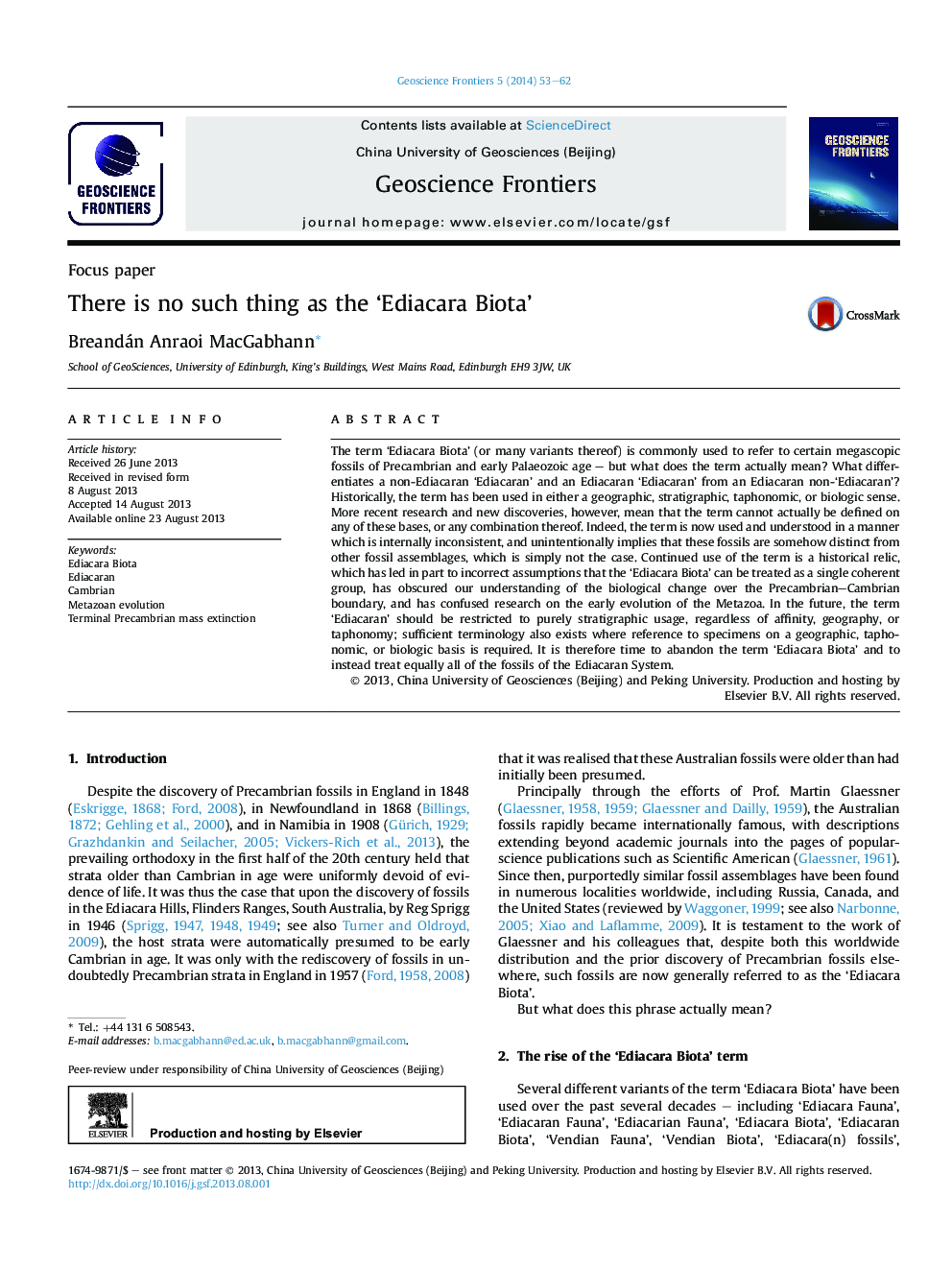| Article ID | Journal | Published Year | Pages | File Type |
|---|---|---|---|---|
| 4681758 | Geoscience Frontiers | 2014 | 10 Pages |
•The term ‘Ediacara Biota’ is commonly used to refer to early megascopic fossils.•This term is inconsistent, arbitrarily excludes certain fossils, and cannot be defined.•Studies of early metazoan evolution must consider all fossils of Ediacaran age.
The term ‘Ediacara Biota’ (or many variants thereof) is commonly used to refer to certain megascopic fossils of Precambrian and early Palaeozoic age – but what does the term actually mean? What differentiates a non-Ediacaran ‘Ediacaran’ and an Ediacaran ‘Ediacaran’ from an Ediacaran non-‘Ediacaran’? Historically, the term has been used in either a geographic, stratigraphic, taphonomic, or biologic sense. More recent research and new discoveries, however, mean that the term cannot actually be defined on any of these bases, or any combination thereof. Indeed, the term is now used and understood in a manner which is internally inconsistent, and unintentionally implies that these fossils are somehow distinct from other fossil assemblages, which is simply not the case. Continued use of the term is a historical relic, which has led in part to incorrect assumptions that the ‘Ediacara Biota’ can be treated as a single coherent group, has obscured our understanding of the biological change over the Precambrian–Cambrian boundary, and has confused research on the early evolution of the Metazoa. In the future, the term ‘Ediacaran’ should be restricted to purely stratigraphic usage, regardless of affinity, geography, or taphonomy; sufficient terminology also exists where reference to specimens on a geographic, taphonomic, or biologic basis is required. It is therefore time to abandon the term ‘Ediacara Biota’ and to instead treat equally all of the fossils of the Ediacaran System.
Graphical abstractFigure optionsDownload full-size imageDownload as PowerPoint slide
